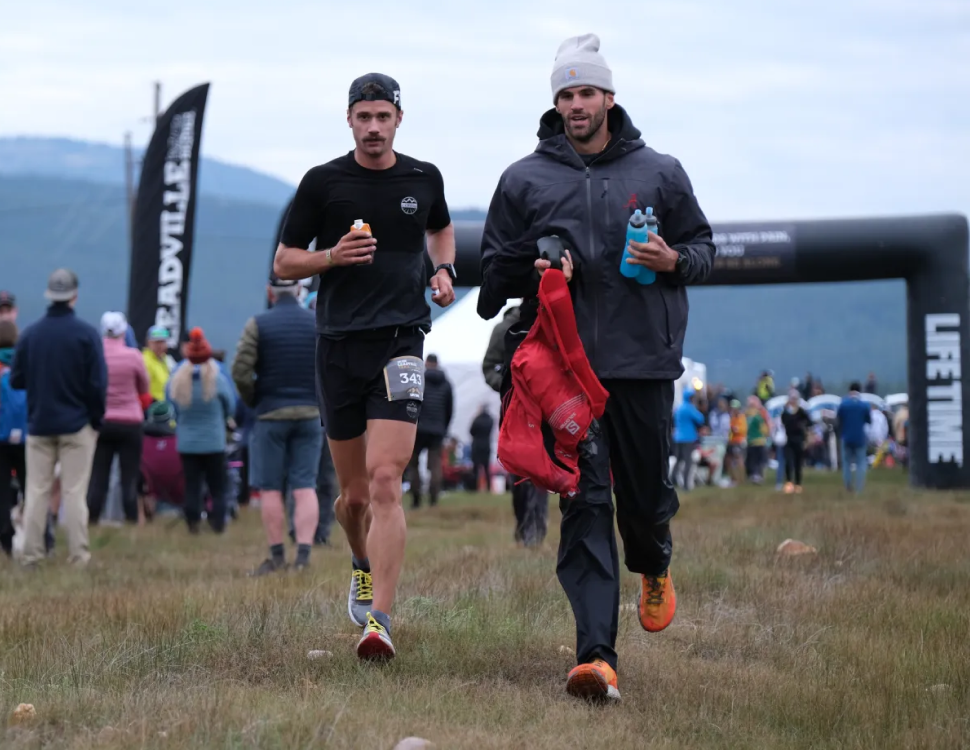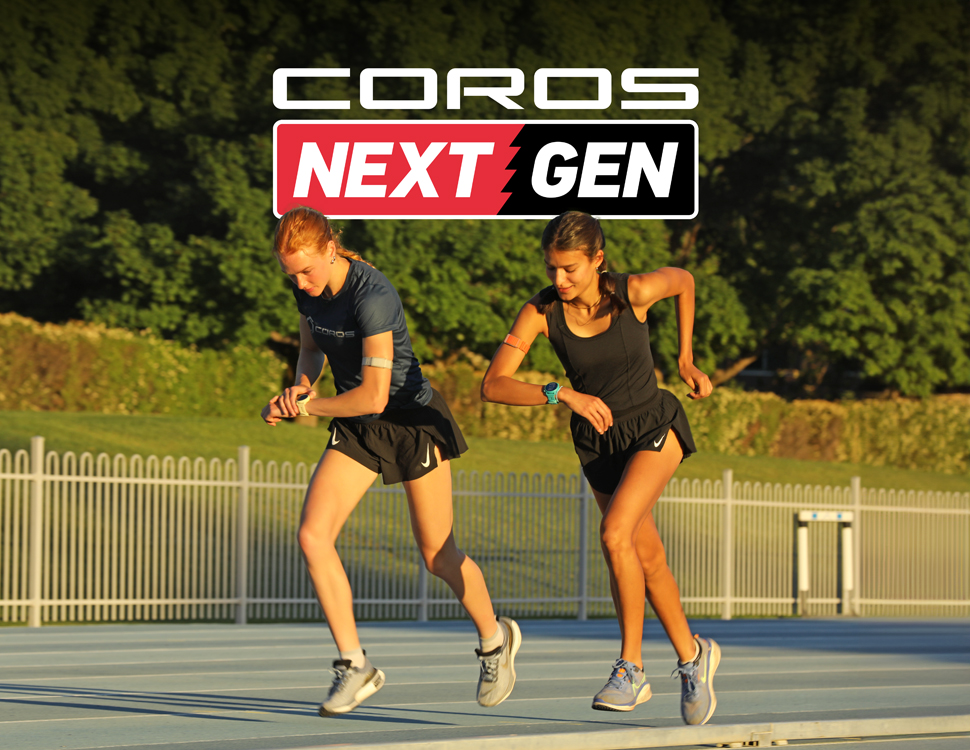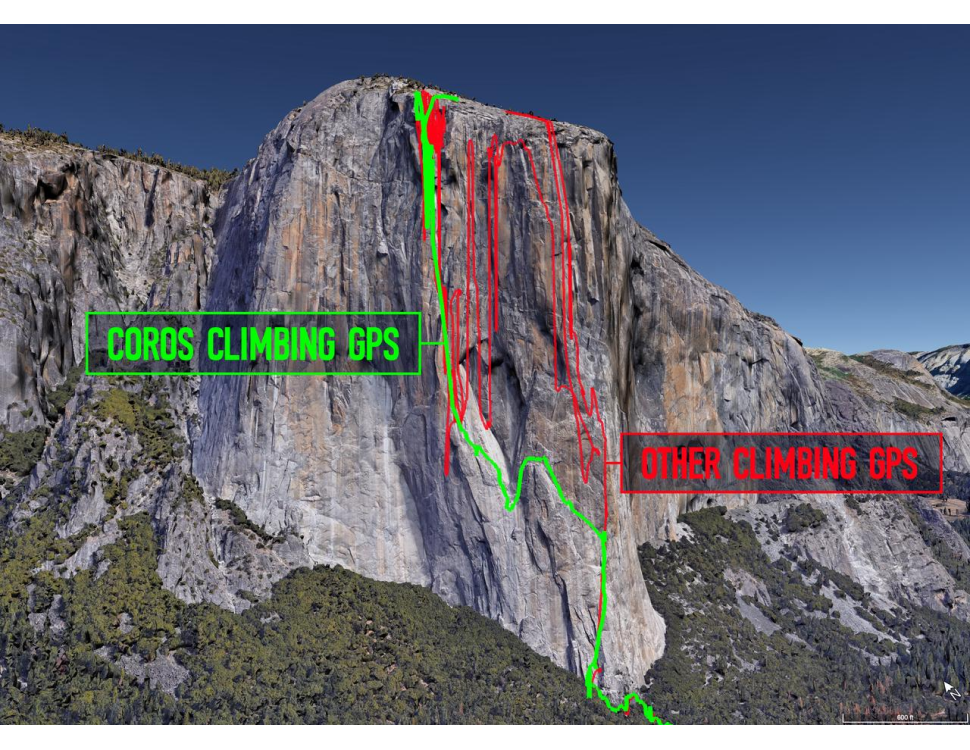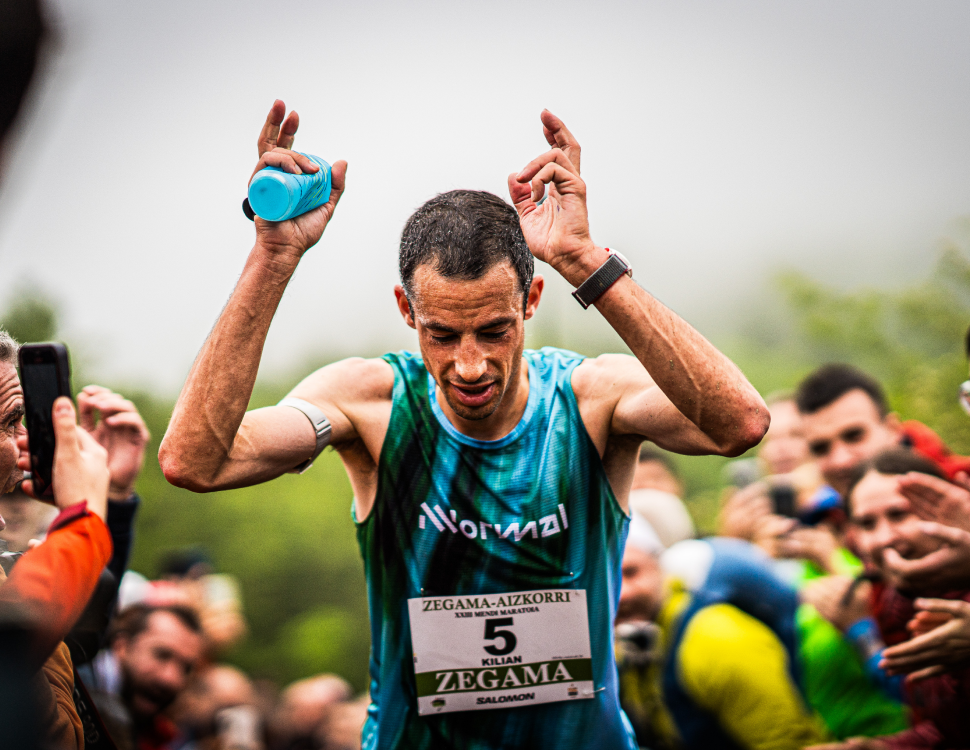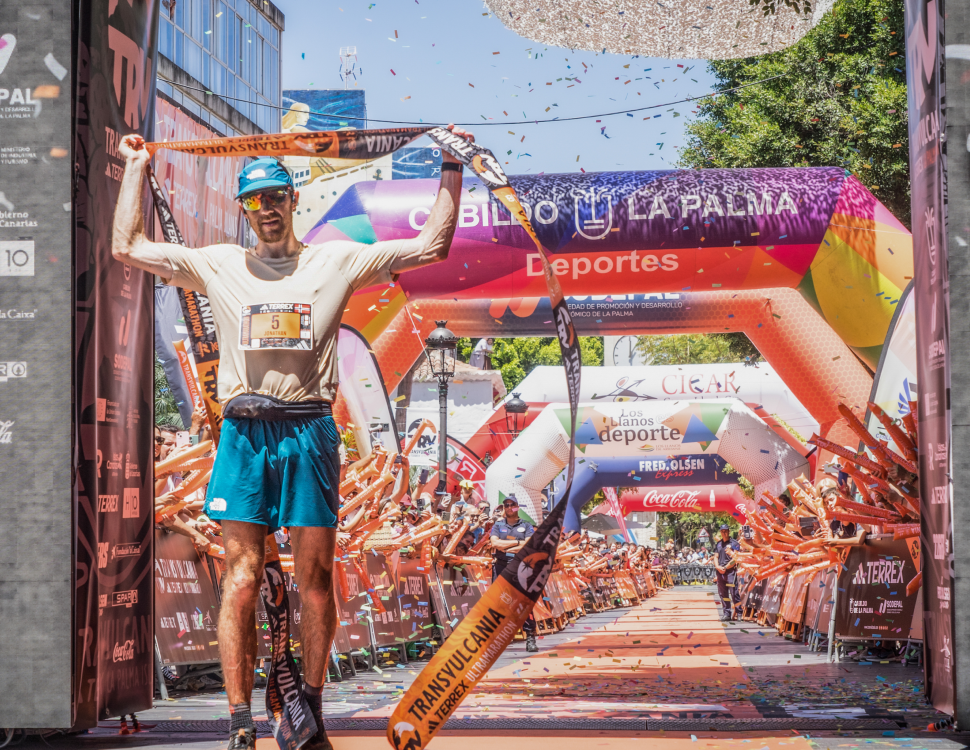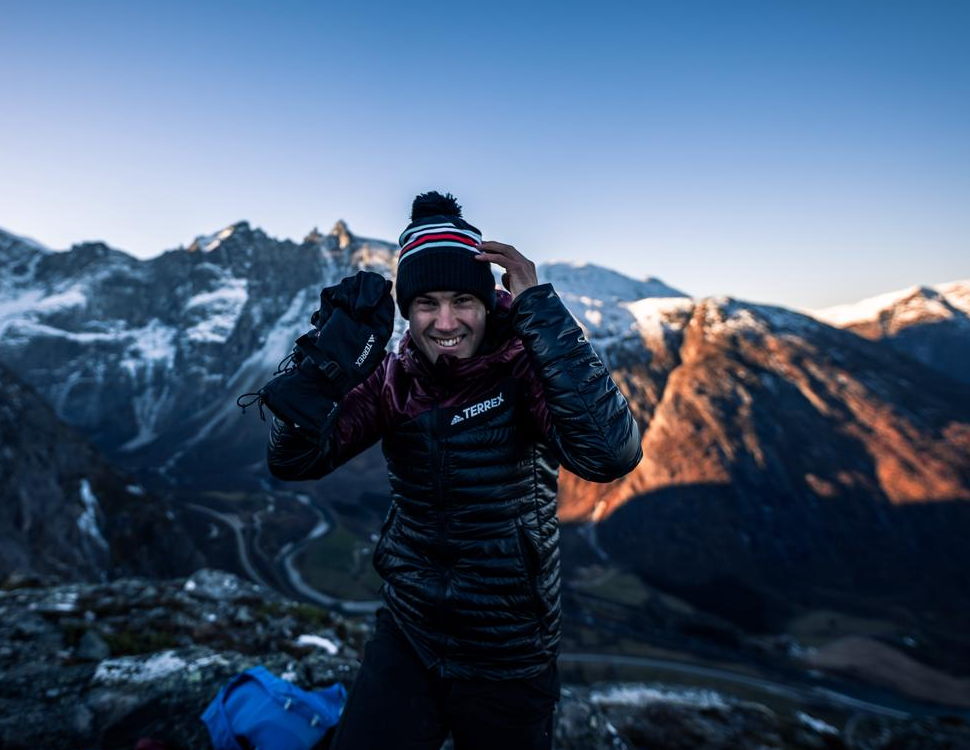Emelie Forsberg has been active outdoors since she was a little girl. Growing up on Sweden's High Coast, Emelie spent her childhood exploring the mountains, climbing, and foraging for mushrooms and berries, which eventually led to her career as a competitive trail runner. Emelie has won numerous European and World titles as a 4x Skyrunner World Series Champion, and placed silver and bronze at the ISMF World Cup Ski Mountaneering Championships.
Now a mother of 2, Emelie credits a lot of her strength and endurance to her off-season. From the months of November to March, Emelie spends significantly less time on her feet running, and more time on the skiis and in the gym. Growing up in northern Sweden, Emelie is used to taking time off from trail running because of the snow.
COROS had a chance to speak with Emelie on the importance of cross-training and how she balances training as a mother. In addition, you can get Emelie's recommended indoor strength workout for runners.
Emelie's Cross-Training Regimen During the Off-Season
Emelie cites several reasons for reducing her weekly mileage during the off-season. Primarily, it's about reducing the total load on the body for recovery. During the spring, Emelie will regularly run 120km (74.5m) weeks, but during the off-season she keeps it at 50km (31m) per week. Emelie says that keeping her running volume low during this time is important, but she still needs to incorporate quality running sessions, otherwise her running fitness come springtime simply isn't there.
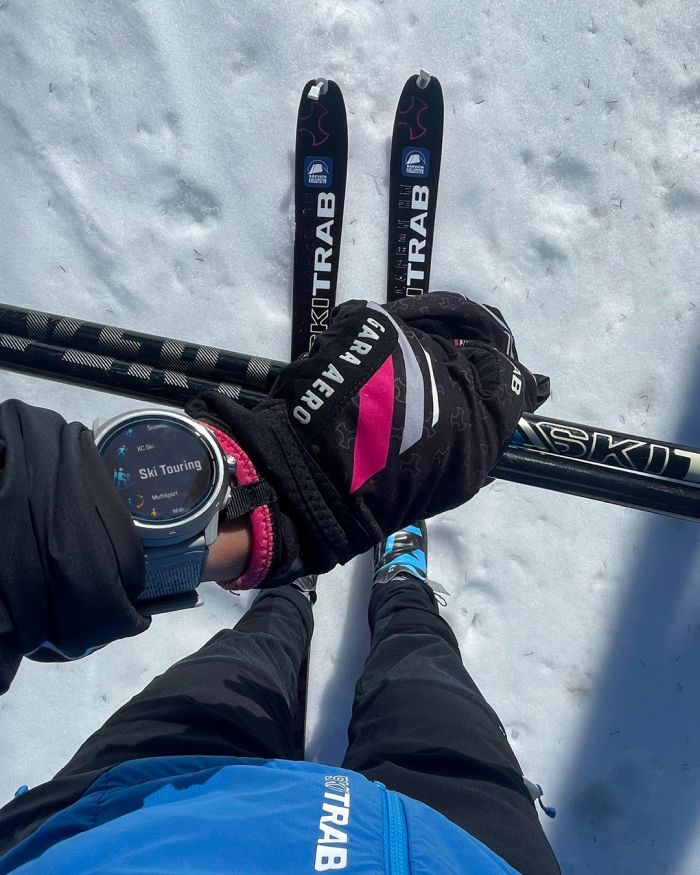
Emelie does 5-6 hour SkiMo cross-training sessions during the winter to build her aerobic capacity.
Typically, Monday through Friday, Emelie will focus on SkiMo (ski mountaneering) while her daughters are in school. About three times per week, she'll do a 5-6 hour SkiMo session to build aerobic endurance, while reducing the load impact on her body. "You get really strong legs and lungs from SkiMo, and it also works the upper body," says Emelie.
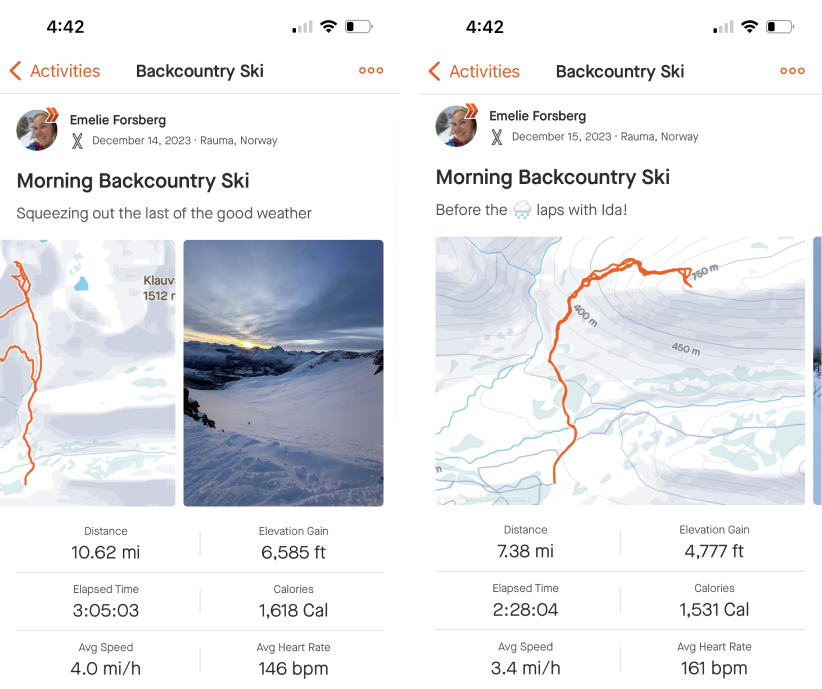
Once a week, she likes to do a high-quality running session, typically indoors on the treadmill as it may involve intervals. She'll do this on the weekends when her girls are home, since it doesn't take as long and she can spend more time with them. The rest of her running miles are usually easy 7-10km runs, oftentimes outside with her dog.
Emelie also says that taking time off from running during the winter strengthens her connection to nature. She believes following the patterns of the season helps her body recover and prepare for a big season in the spring.
I really like the connection with nature that it gives. I'm resting my body from running and getting really good training during the winter months with skiing. Following the patterns of nature is important for circadian rhythm.
Although Emelie maintains a fairly similar weekly Training Load (how difficult the workouts are) throughout the year, she drastically reduces her weekly running mileage by nearly 60% during the winter months. Emelie focuses on low-intensity during cross-training to be able to increase her training volume and maintain her weekly Training Load ot best prepare for the upcoming summer months as seen in the table below.
| Training Period | Weekly Training Load | Base Fitness Following Training Period | Highest Weekly Running Mileage (miles) | Average Weekly Training Volume (hrs) |
| Spring/Summer Months (Apr - Aug) | 1113 | 186 | 120km | 15-20 hours |
| Winter Months (Nov - Mar) | 1130 | 194 | 50km | 25-30 hours |
COROS Education: Training Load refers to the amount of stress accumulated through each activity based on volume (time) and intensity (heart rate). The longer and/or more intense your training is, the higher your training load score will be.
Similarly, Emelie's Base Fitness in her COROS app does not deviate much depending on the season despite spending much more time cross-training. This is due to the fact that she focuses on low-intensity and low-impact sessions such as SkiMo that allow her body to sustain additional volume when compared to running.
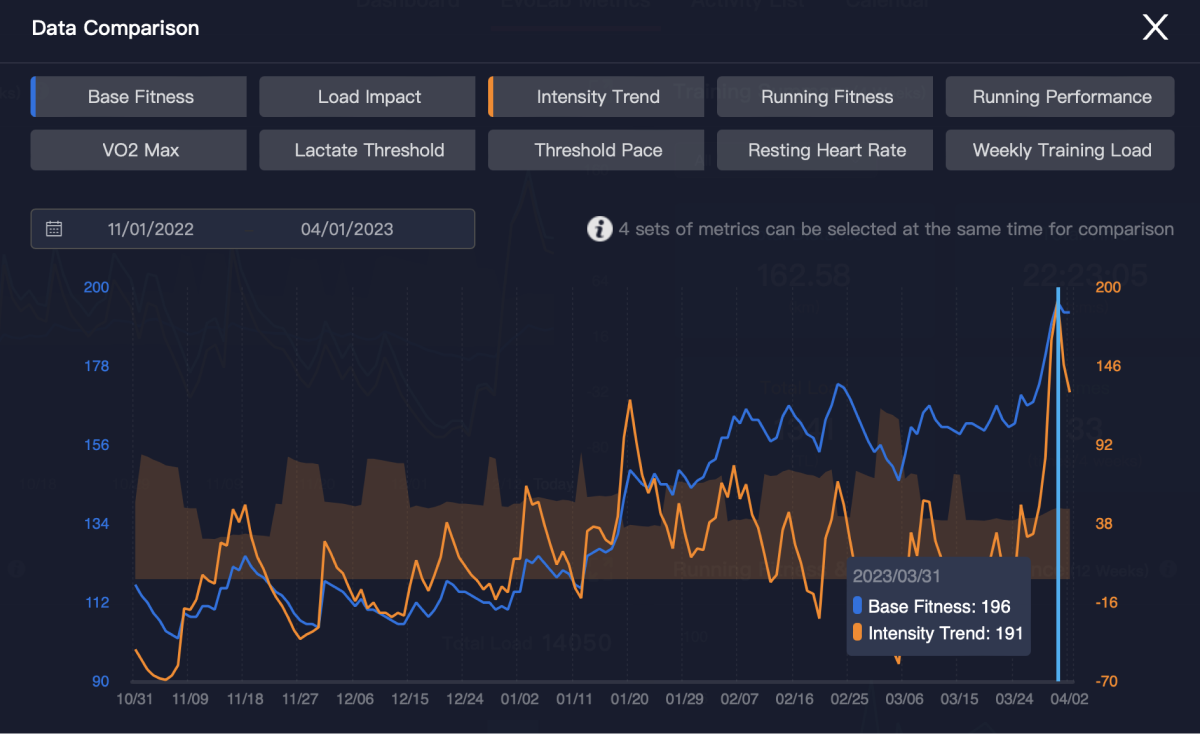
Emelie's Base Fitness steadily increased from November 2022 through March 2023, where she was primarily cross-training and reduced her total running volume. This prepares Emelie for a strong spring season when she returns to running and racing.
COROS Education: Base Fitness refers to the chronic load from your past 6 weeks of training. A decrease in Base Fitness during your off-season is recommended to ensure you are well recovered before building back up during peak season.
The Benefits of Cross-Training Post-Partum
Emelie has two daughters named Maj and Ylva-Li, ages 5 and 3. Since becoming a mother, Emelie has found cross-training even more important, especially doing strength work in the gym. After her pregnancies, Emelie said it was extremely important for her to gain strength in her lower back and hips. She would strength train twice a week to build these muscles, and saw a pelvic floor doctor to help with additional exercises.
Getting back to running too soon after pregnancy increases risk of injury. Things like pelvic pain, fatigue, urinary leakage, or diastasis recti (a separation of the abdominal muscle tissue) are physical symptoms women can experience and it's important to take things slowly. Following her pregnancies, Emelie focused more on quality than quantity. While she couldn't do her normal 30-hour weeks of training, she could still get in a few high-quality sessions, and do a lot of indoor cross-training for lower impact.
Watch here for a full conversation on training pre and post-pregnancy with Emelie Forsberg and COROS.
Why Women Should Do Strength As A Form of Cross-Training
Regular strength training for women has proven to increase bone density, improve joint function, increase metabolism, and help women gain muscle. Functional strength training for runners also reduces risk of injury, and allows for more powerful, explosive movements that can improve speed. Emelie does core and body weight exercises twice a week, and strength with weights twice a week.
Emelie's Top Strength Exercises for Running
- For Core Strength:
- Front Plank, Side Plank, Backside Plank
- Russian Twist
- Push-ups
- Hang-ups (or just hanging)
- For Hip Stability: Lying Hip Raises
- For Glutes, Hamstrings, and Legs:
- Side Lying Hip Raises
- Step-Ups
- Lunges
- Deadlifts or variations with free weights
- Standing row with weights
- Plyometrics
In general all of these exercises are good for running. We need strong legs, hips, glutes, but also back, upper body to be able to keep a good posture during the long runs. It's not only the legs that need to be strong for a good running stride!
Do It At Home: Emelie's Strength Training Workout
Emelie has created a body-weight strength training workout for runners within the COROS app, which you can try at home. All COROS athletes can download for guidance and place it on their training calendar.
How to Download Emelie's Workout to your COROS Watch:
- Click the link and save the workout to your library
- On your watch, go to "Workouts", click the workout and select "Start"
- Your COROS watch will guide you through the exercises based on the time allotted
Emelie Forsberg's 2024 Racing Season
Starting in March, Emelie will start to increase her weekly mileage, sometimes jumping right into 120km weeks. "I feel strong enough to make that jump," she says. "I absolutely feel like cross-training sets you up to take on the additional load from running. And I think what has been really good is to do one quality session on the treadmill."
As she gets back to full training, she'll take a recovery week in between, usually running 50-60km, then building up to 80km, then 90km. For Emelie, getting back in running shape is all about finding the right balance and listening to her body coming off the winter months. She knows her cross-training has set her up to be strong and has built her aerobic capacity, so now she needs to get back to a consistent weekly mileage paired with high-intensity workouts leading into race season.
Looking ahead, Emelie is focused on the Ultra-Pirin 100-miler, a Hardrock qualifier in Bulgaria next September 2024. Between now and then, she'll also race Sierre-Zinal in August, and few local races in Norway and Sweden. As she takes time to ski and enjoy the off-season, she knows she'll be really eager and motivated to come back.
When you're ready to run and you're in good shape, it's a really nice feeling. And I'm excited to find that again. It's a renewed sense of excitement.
To track Emelie's SkiMo adventures, you can follow her on Strava and Instagram.
/fit-in/0x18/coros-v2/images/common/logo_black.png)
